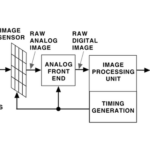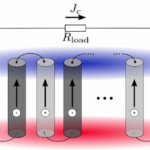At Sensors Expo 2019, Tanja Hofner, a Principal Hardware Engineer for RF and Sensors in Infineon’s Power Management and Multimarket segment explains the operation of the company’s Integrated Alarm System demo. The demo uses two Infineon sensors: the digital XENSIV IM69D130 microelectromechanical systems (MEMS) microphone and a DPS310 digital barometric pressure sensor as well as time-synchronized sensor fusion to provide improved response to common error-causing stimuli.
The system listens for glass breaking sounds and once the glass has been broken, the pressure change between the inside and the outside of the house is detected by the pressure sensor. Sensor fusion combines the data from the two sensors to minimize false alarms. With the pressure sensor in the system, both forced and unforced intrusion without breaking glass can be detected.
The IM69D130 microphone has a 105 dB dynamic range and a 69 dB(A) signal-to-noise ratio. The DPS310 pressure sensor has an operating range of 300 hPa to 1200 hPa, precision of 0.005hPa and relative accuracy of ±0.06hPa.
For potential users to evaluate the alarm system, Infineon has an alarm system testing kit, a form factor reference design and a chip-down design. The testing kit includes:
- Easy change of modes via app
- Demo mode
- Glass break mode
- Intruder mode
- Recording of audio files and pressure data
- Audio output of detected (glass break) events
The form factor reference design with fully qualified software includes:
- Easy visualization of all three modes via UART
- Test mode
- Glass break mode
- Intruder mode
- Adjustable sensitivity for different room sizes
- LED indication of detected glass break/intrusion event
- Fully tested and qualified software on a small form factor






Leave a Reply
You must be logged in to post a comment.